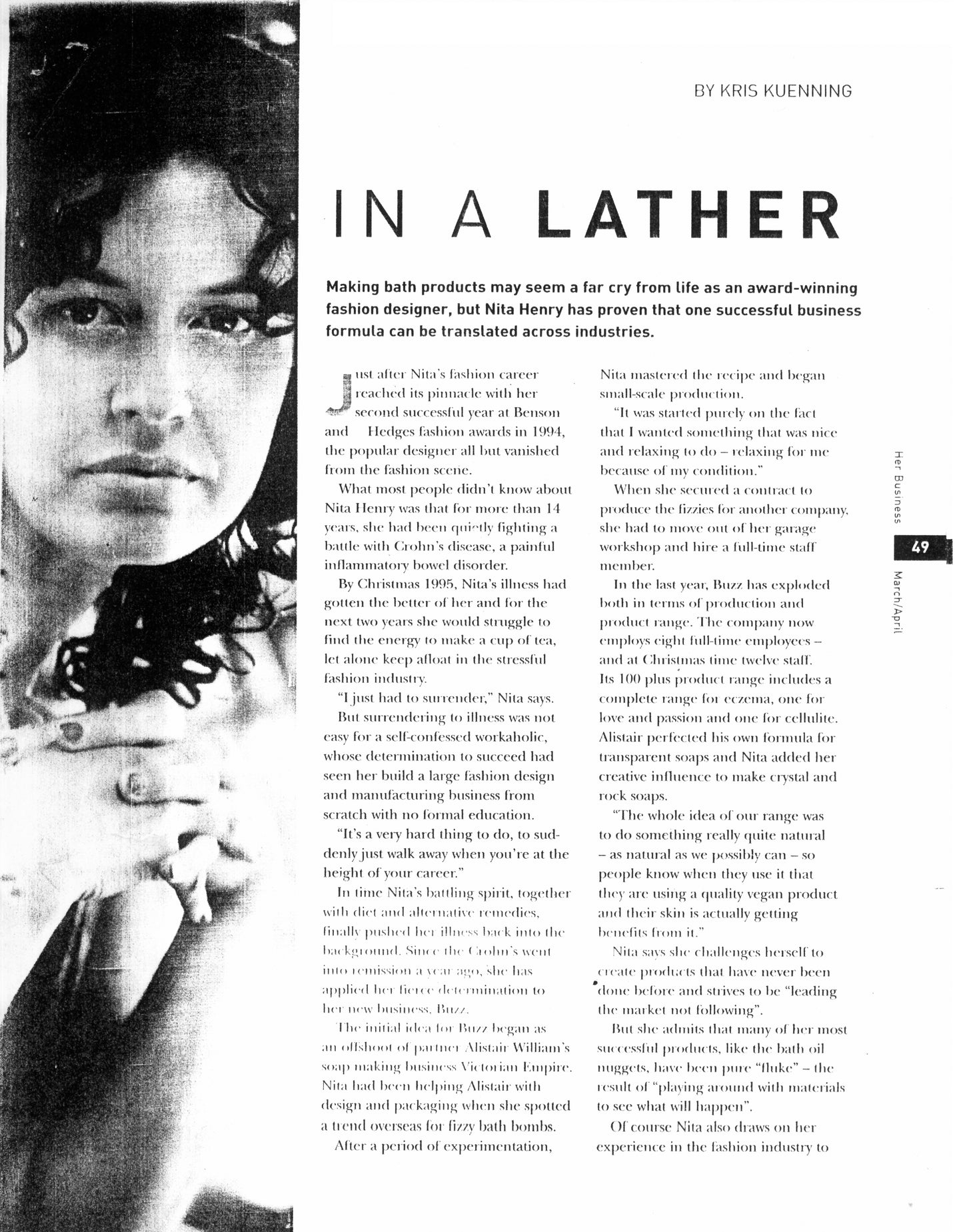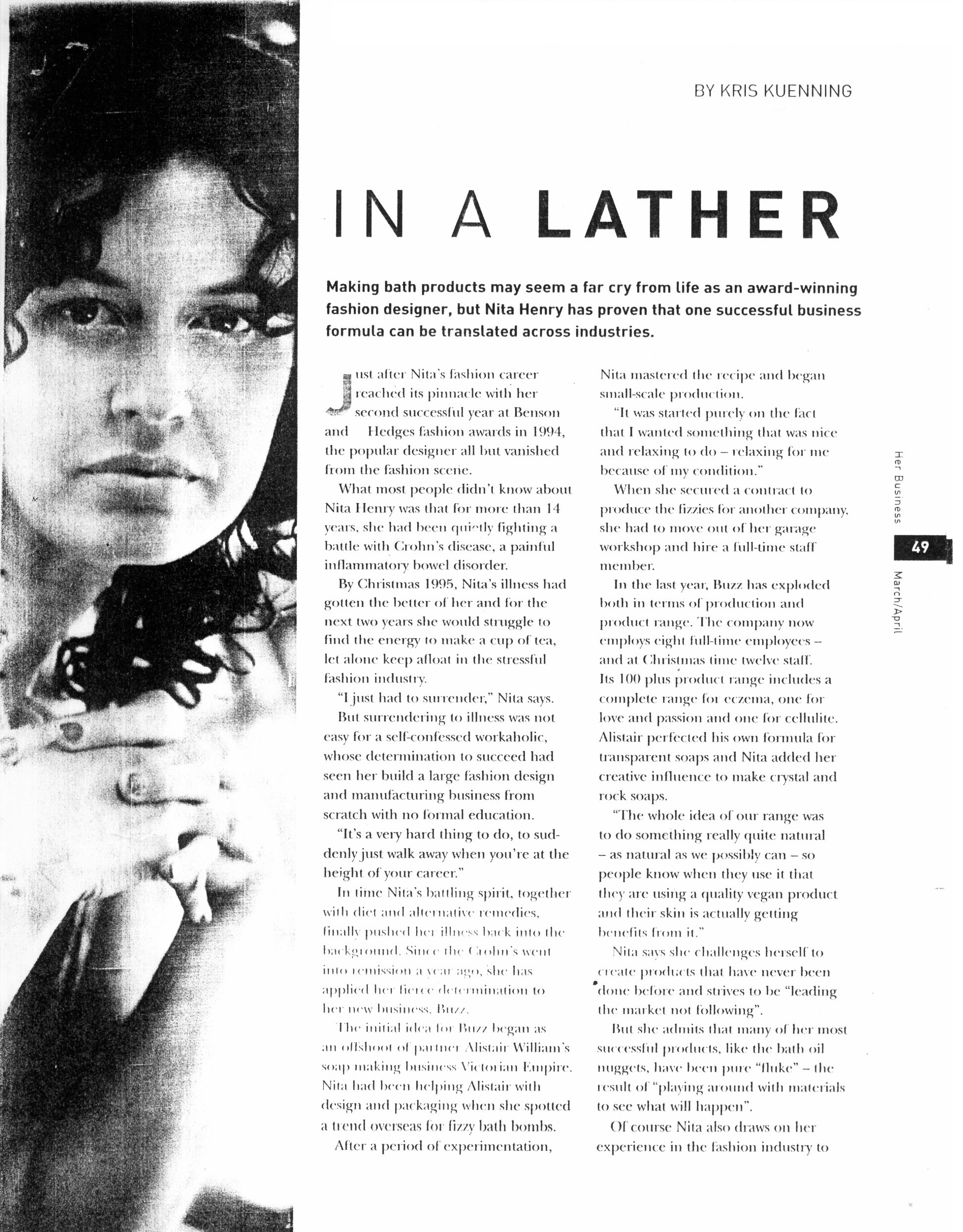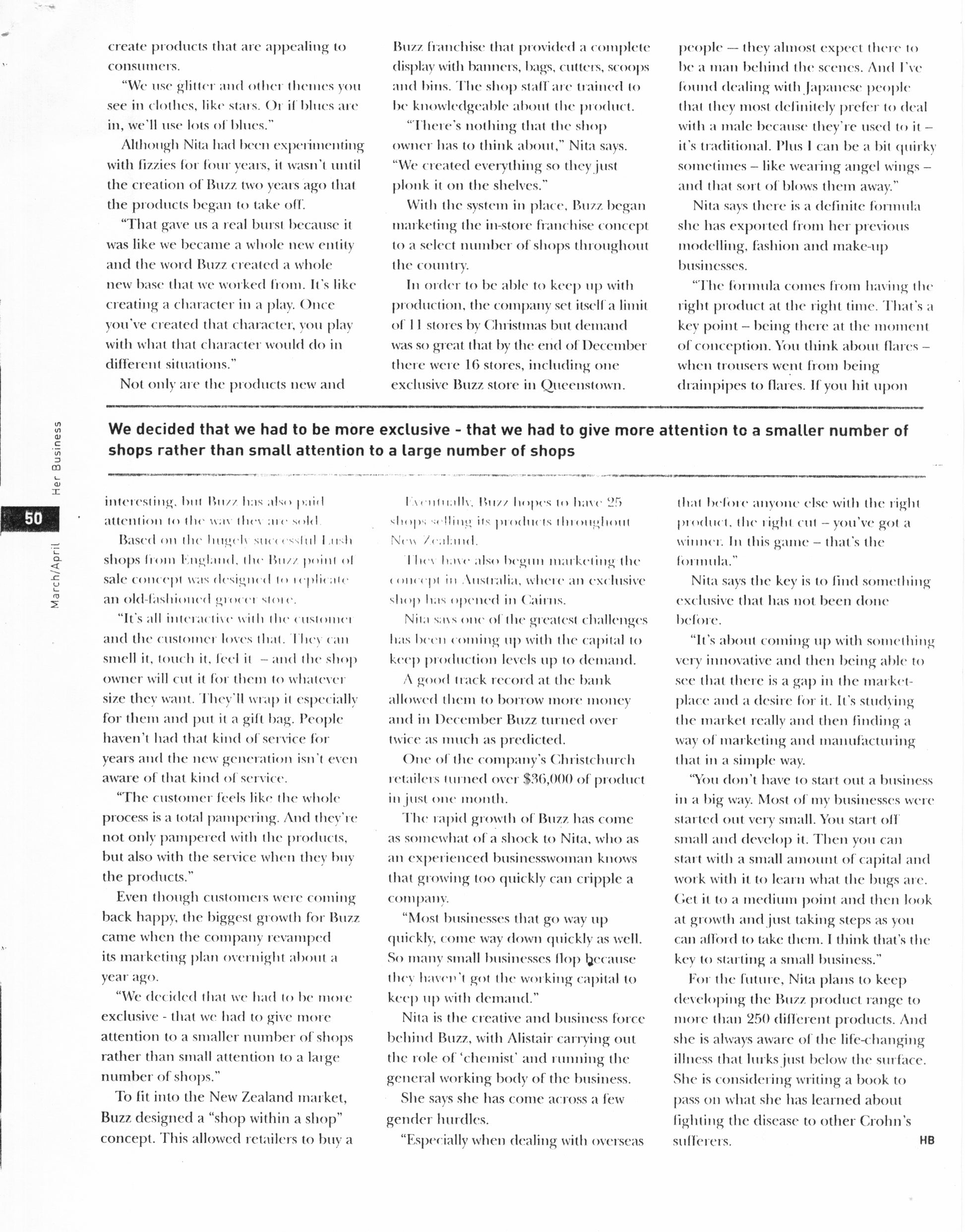sacrednz
Her Business Story 2001
Her Business Story 2001
Couldn't load pickup availability
Working as a seamstress from age 15 and then absorbing the fundamentals of the fashion industry as a model, the young woman from Christchurch – with no formal training but loads of talent, confidence and practical experience – was designing and making leatherwear for shops throughout New Zealand and Australia by the age of 21.
Throughout the 80s and into the 90s, the name, face and label of Nita Henry reflected nothing but success. The tall, confident designer was creating and overseeing the production of her own label’s ranges as well as designing several lines a year for the tourist trade. Nita Henry garments have been worn by Rachel Hunter and The Temptations, and even the Indian from the Village People.
She was also setting records with her success in the Benson & Hedges Fashion Awards. In more than a decade of entering, only one of her famously detailed entrants was not selected. In total, she received more than 20 nominations. Nita Henry won the menswear award in 1993 and had a record six selections in 1994. Four of those went on to win Highly Commended (i.e. second place) awards.
Then suddenly, in 1995, nothing. Not one entry.
At the peak of her career, Nita Henry simply vanished from the fashion scene.
What few people knew about the brilliant and ambitious designer was that behind the beautiful, successful facade of Nita Henry was a woman quietly coping with illness.
Immediately following the break-up of her first marriage at the tender age of 21, Nita fell ill. She began losing weight and there were bouts of painful diarrhoea. A diagnosis did not come easily. Two years of frustration with shoulder-shrugging physicians led Nita to seek the advise of a naturopath. After thorough tests and questioning, she was diagnosed with colitis, which wasn’t far from wrong.
Only in the last three years has the conclusive diagnosis come through. Nita, like thousands of other New Zealanders, suffers from a mysterious and life-threatening – although relatively unknown – inflammatory bowel disease called Crohn’s.
There is no consensus about what causes Crohn’s and there is no known cure.
Basically, the digestive tract becomes inflamed and in some places plagued with ulcers. This is not only excruciatingly painful, but it reduces the body’s ability to absorb nutrients.
The treatments for Crohn’s disease are limited even today; but in the early 80s, when the disease was relatively unheard of, medical science had nothing to offer Nita. Yet by altering her lifestyle, controlling her diet and managing her illness with the same determination and efficiency that ruled the rest of her life, Nita Henry worked on. For 14 years she kept her illness quiet for fear of being perceived as ill or incapable.
“I always put on a brave face and worked on,” says Nita.
During bed-ridden periods, when the slightest movement would trigger pain, Nita would draw or stitch the meticulous, labour intensive garments that she was famous for.
“I was basically a workaholic. I would work through pain – I would just keep forcing myself because there was either deadlines or I just didn’t want to let people down.”
But like many illnesses, Chrone’s disease is susceptible to stress. The frantic pace of the fashion industry – and especially the stress of competition – proved more than Nita’s fragile health could handle.
The reality of her illness came to a head at Christmas 1995, when Nita was finally admitted to hospital. For the next few weeks she battled through intense suffering. Despite her high threshold of pain, Nita’s shrieks of agony would echo through the hospital. She was pumped full of morphine to control the pain, cortisone to reduce inflammation and countless other drugs. Attached to machines, Nita couldn’t so much as get out of bed by herself.
“There were times when I really thought I was going to die.”
Finally she had no choice, no where to go but to accept it.
“I had to surrender and I think that was my biggest lesson because I was such an organiser and I liked to control things.” She says she reached a point where she had to let go of everything, even the career she had worked so hard for. “It’s a very hard thing to do, to suddenly just walk away when you’re at the height of your career.” Her experience sounds horrific, but somehow the gentle, soft-spoken Nita – her illness now in remission – invokes no pity. Somehow, she is not bitter or angry. She holds no resentment for the illness.
“I think that what this has done for me is it’s taught me a lot; it’s given me a lot of compassion; and it’s humbled me a lot – and it’s also led me in another direction.” Nita’s illness forced her to re-asses her life and decide what she really wanted to do: “I think the main things were that I wanted to be happy, and I wanted to be well, and I wanted to really enjoy what I was doing.
“I loved the fashion but it got to be a job after a while, after you’ve been doing it for that long, you’re caught in the loop and you can’t get out.” Nita, now 39, is running a successful natural cosmetics business making products like the popular “fizzy bath bombs”.
“I’m still covering people’s bodies,” laughs Nita.
She uses her creativity to develop new products and design packaging for both her products and husband Alistair Williams’s range of herbal soaps and shampoos.
And Nita’s creative evolution does not end there. She recently rediscovered a childhood passion in painting and has embarked on a series of “cosmic comic strip heroines” using a mix of watercolours, oils, acrylics, ink and airbrushing. Each finely detailed painting also has a story explaining the mystical and extraordinary powers of her super-women. “I see myself in the future just doing painting full time.”
Always mindful that a relapse could be around the corner, Nita says practically: “Painting is relaxing. It’s something, if I ever really got sick again, I could do it while I’m lying in bed.”
The name of Nita Henry is far from gone. Many will remember her for her fashion designs. Many others are sure to see the same stylish signature of Nita Henry on art gallery walls.
And then there are those who do not float in social circles. The little girls who arrive at her factory shop with a gold coin and leave with a smile and a fizzy bath bomb clutched in their little hands.
But maybe the most exceptional are the young Crohn’s sufferers who will know Nita Henry as an encouraging smile over a hospital bed, telling the story of how she was once where they were and offering hope of a light at the end of the tunnel.
“I think that is part of the purpose of it as well, so that I can help others,” says Nita confidently. In a soft, ethereal voice she adds: “And that’s special.”
by Kris Kuenning Herbert
Share



